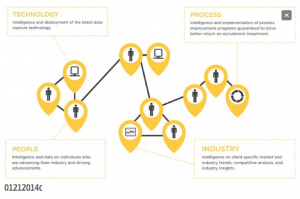The following post is being shared with permission from our friends at Avancos. View the original post by Dave Hickman on the Avancos blog.

Over the last three months we’ve had a spike in requests from Fortune 200 companies inquiring on what to do in emerging markets. We see this as a good sign that companies are looking to expand global operations, revenue streams, and willing to venture into higher risk projects for growth and returns. Specifically, these higher risk projects are in markets that are experiencing political and economic uncertainty, which for global organizations, is an acceptable risk for being first to market for the potential of greater profits.
The challenge is not becoming legally established, setting up distribution channels, and building operations, the greatest challenge is identifying and attracting qualified talent (STEM Skills- Science, Technology, Engineering, Mathematics). When experiencing this dilemma, Human Capital Executives begin to ask the most common three questions; do we build and train from the local talent pool, do we pull internal talent from the rest of the world in other divisions, or do we attract nationals back to this market?
There are advantages and disadvantages for each option, but for today’s blog, my goal is to provide you with a foundational formula that will hopefully lead you to discern the local talent pool in order to choose an option or combination of options.
- Identify the Market- Assuming you have a clear understanding on the skills, experiences, and cultural fit, you will then need01212014c to determine what type of Talent inventory exists in the city, country, and region. Are there 22 business analysts or 2200 in the country? What if there are 22,000 and 3% are from the native country, which maybe 10% want to return back to their home country? Finding out whom and where talent resides gives a better understanding on the availability of talent. We call this Talent Intelligence. This is the first phase of Talent Intelligence that identifies the talent market in order to strategically plan ahead to mitigate risks and make better decisions. Knowledge is power.
- Talent Market Research- Once you’ve identified up to 80-90% of the talent market, it’s time to dig deeper and gain a better understanding on what is really happening within the Talent Market. Identifying push/pull factors such as compensation, benefits, responsibilities, roles, quality of skills, experience, education, and any other local/regional market forces that will help identify risks and opportunities. For instance, in some countries it’s customary for candidates to accept an offer from several companies, hide the fact from all companies, then show up to the highest bidder without informing the other companies. When you gain the knowledge of what’s happening on the ground, contingency plans can be developed to mitigate such a risk.
- Build a pipeline for attracting future talent- With all of the data captured in Talent Intelligence, you now have the opportunity to communicate and build a positive employer brand for future employees. We call this Talent Pipelining. It’s an approach to be strategic and proactive with continuous engagement strategies targeted at specific talent pools. This doesn’t have to be local or regional; it can be global and universal. Ok, maybe not universal yet, but the practice of building a consistent and scalable solution to engage with your future talent is absolutely doable. This is a solution we currently design, develop, and manage each day to ensure clients have a system for accessing talent faster now and in the future.

If you have any questions, comments, or best practices to share, please contact me at dave.hickman@avancos-global.com
About Dave Hickman
Dave Hickman is currently the President and one of the original founders of Avancos Global. With more than sixteen years of providing leading edge workforce solutions for global companies, his passion to learn has become an obsession to create Talent Management solutions that matter. His spare time is invested in family and anything golf related.
About Avancos
Avancos is a global workforce solutions firm specializing in talent intelligence, process improvement consulting, and talent acquisition. The company was originally founded in 2001 with offices in Netherlands and Spain, and since 2008, demand for our services has driven rapid growth resulting in additional locations in US, India, UK, and Sweden.

